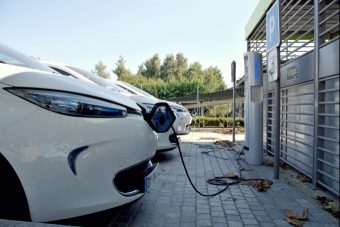
India’s Ministry of Heavy Industries has adopted recommendations for the implementation of national standards for electric vehicle charging stations — Bharat EV Charger AC-001 and Bharat EV Charger DC-001.
The Ministry first issued draft protocols for national standards for AC and DC charging stations in March 2017, which was later released for stakeholder comments. Several stakeholders, including Electric Mobility Alliance, Mitsubishi Motors, and Society of Indian Automobile Manufacturers, submitted the comments.
The recommendations made by a panel which studied the initial draft protocols, and the stakeholders comments, have been adopted by the Ministry, which is now expected to come out with the final protocols.
The draft protocol did not venture into the use of private chargers (installed at homes) and restricted itself to the use of public chargers. The protocol indicates a variable price for charging EVs from public chargers depending on the supply-demand scenario of the grid at a particular instant; no further details regarding price was mentioned in the draft protocol document.
Indian automobile manufacturers are unlikely to provide AC chargers of more than 3 kW capacity due to cost constraints. For such chargers, a charging point of 230 V single phase would be required, which can fully charge a 2-wheeler in an hour and a 4-wheeler, with batteries of 12 kWh or more, in five to six hours.
The protocol discusses two types of DC chargers — Level 1 and Level 2. Level 1 chargers can have a voltage output of 48/72 V with power outputs of 10 kW or 15 kW. Higher capacity DC chargers (Level 2) can have voltage output of 1000 V and power output of 30 kW or 150 kW. Specifications of Level 1 chargers only were discussed by the panel.
The panel further discussed how the charging stations will communicate with the power supplier and how the vehicle owner would be billed and payments made. It also proposed that a revenue sharing arrangement between the space providers and suppliers of chargers would present a commercially viable solution.
The draft protocol further states the details of specifications for AC and DC chargers, including the type of wires and cables needed, various buttons and displays required at the charging console and payment gateways.
Source: cleantechnica.com


